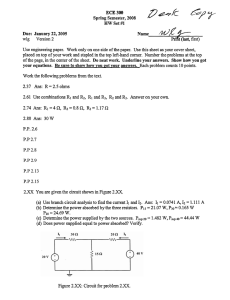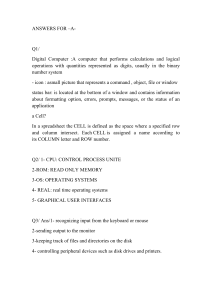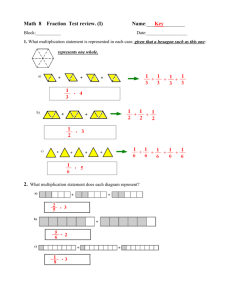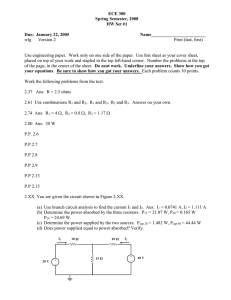Theory of Numbers (V63.0248) Professor M. Hausner Answer sheet
advertisement
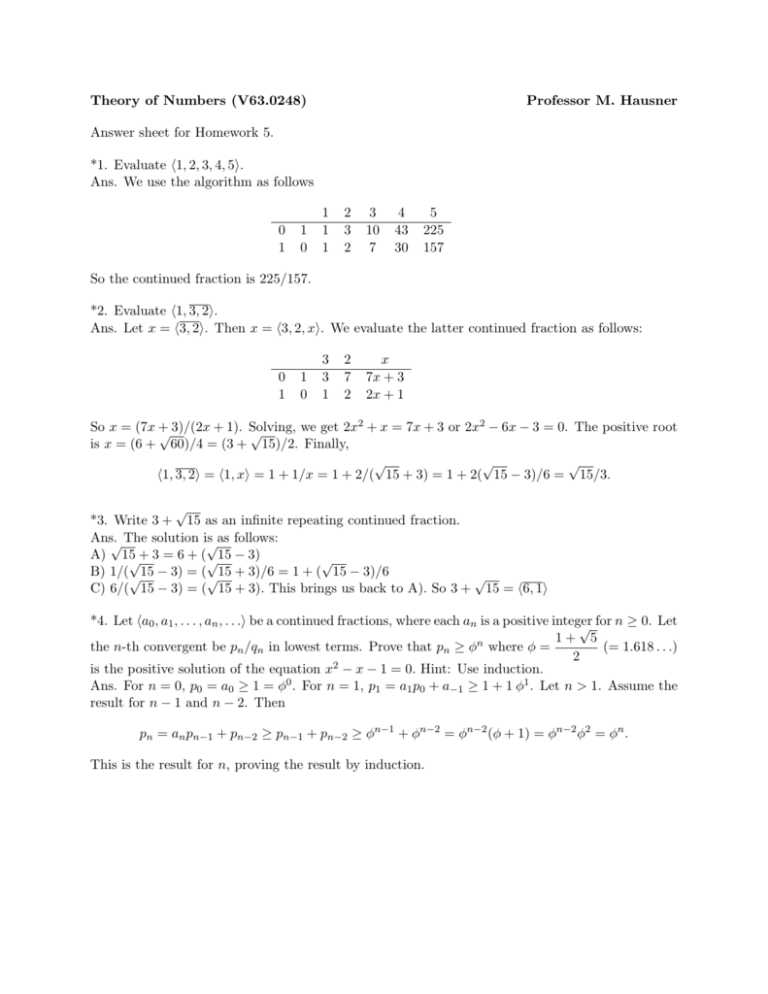
Theory of Numbers (V63.0248) Professor M. Hausner Answer sheet for Homework 5. *1. Evaluate h1, 2, 3, 4, 5i. Ans. We use the algorithm as follows 0 1 1 0 1 1 1 2 3 2 3 10 7 4 43 30 5 225 157 So the continued fraction is 225/157. *2. Evaluate h1, 3, 2i. Ans. Let x = h3, 2i. Then x = h3, 2, xi. We evaluate the latter continued fraction as follows: 0 1 1 0 3 3 1 2 7 2 x 7x + 3 2x + 1 So x = (7x + we get 2x2 + x = 7x + 3 or 2x2 − 6x − 3 = 0. The positive root √ 3)/(2x + 1). Solving, √ is x = (6 + 60)/4 = (3 + 15)/2. Finally, √ √ √ h1, 3, 2i = h1, xi = 1 + 1/x = 1 + 2/( 15 + 3) = 1 + 2( 15 − 3)/6 = 15/3. √ *3. Write 3 + 15 as an infinite repeating continued fraction. Ans. √ The solution is√as follows: A) 15√+ 3 = 6 + (√15 − 3) √ B) 1/(√15 − 3) = (√15 + 3)/6 = 1 + ( 15 − 3)/6 √ C) 6/( 15 − 3) = ( 15 + 3). This brings us back to A). So 3 + 15 = h6, 1i *4. Let ha0 , a1 , . . . , an , . . .i be a continued fractions, where each an is a positive integer √ for n ≥ 0. Let 1 + 5 the n-th convergent be pn /qn in lowest terms. Prove that pn ≥ φn where φ = (= 1.618 . . .) 2 is the positive solution of the equation x2 − x − 1 = 0. Hint: Use induction. Ans. For n = 0, p0 = a0 ≥ 1 = φ0 . For n = 1, p1 = a1 p0 + a−1 ≥ 1 + 1 φ1 . Let n > 1. Assume the result for n − 1 and n − 2. Then pn = an pn−1 + pn−2 ≥ pn−1 + pn−2 ≥ φn−1 + φn−2 = φn−2 (φ + 1) = φn−2 φ2 = φn . This is the result for n, proving the result by induction.

